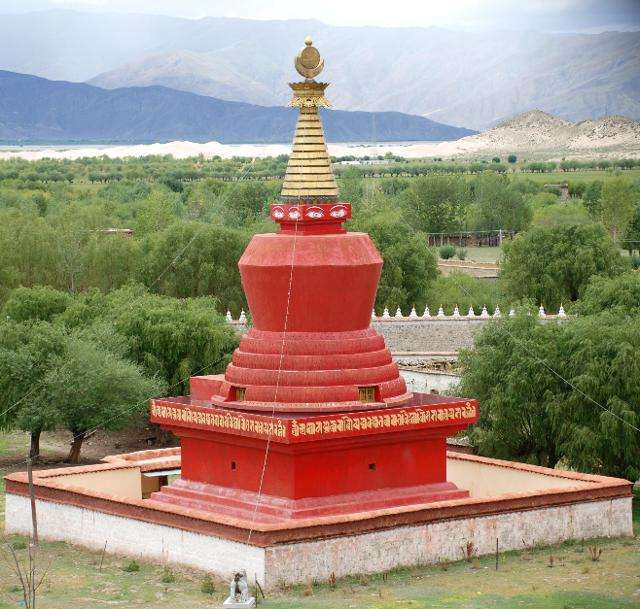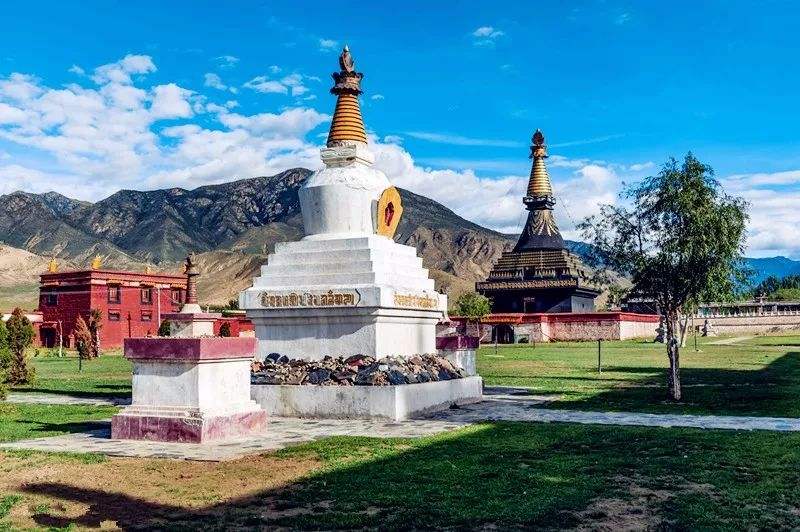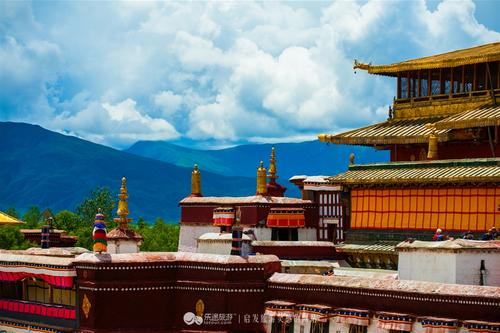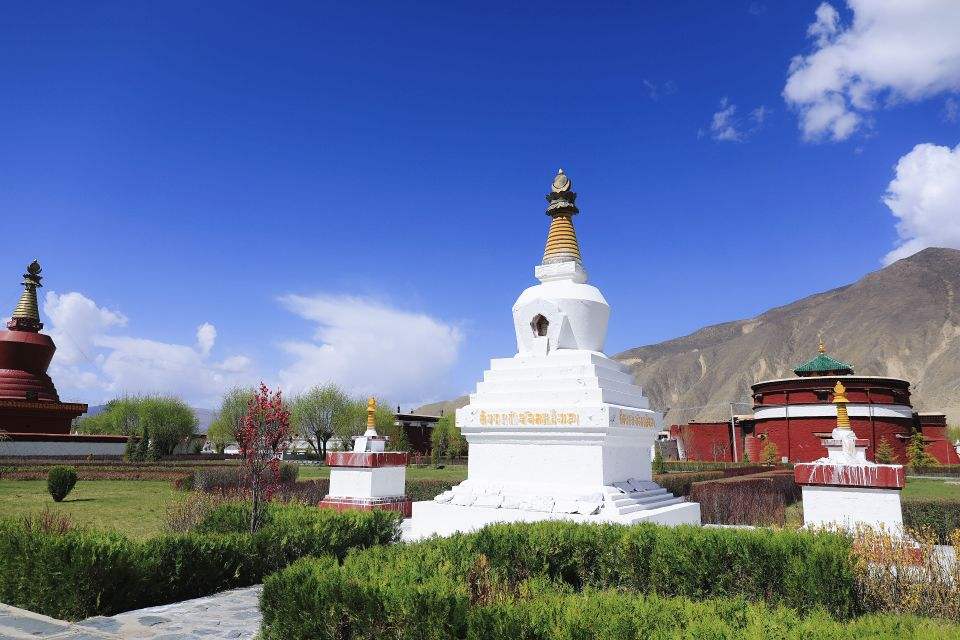Chinese Name: 桑耶寺 Pronunciation: sāng yē sì
Opening Hours: 09:00-16:00
Best Visiting Time: June to August
Suggested Visiting Hours: 2-3 Hours
Occupied Area: About 25,000 square meters
Building Function: Samye Monastery was built to spread Buddhism.
Building Time: In the middle of the 8th century A.D, the Tubo Dynasty.
Admission Ticket Fare: Free for Tibetans, 30 yuan for tourists from other places.
Address: It is located in the Mchims Phu valley, south of Lhasa, next to the Hapori mountain, in the Yarlung Valley.

Samye Monastery was first built in the middle of the eighth century, the Tubo Dynasty Zampu Chisong Dezan period. Although Buddhism had been introduced into Tibet before that, most monasteries at that time had no monks and Buddhist rituals.
After the completion of the Samye Monastery, Chisong Dezan ordered the seven Tibetans of the first batch to be monks. Therefore, the Samye Monastery became the first formal Buddhist temple in Tibet with three complete treasures of “Buddhas, Dharma, and Monks”.
The whole architectural layout is designed according to the Buddhist “Tan Cheng”, with three different architectural styles of Tibet, Han, and India( the first floor is Tibetan style, the second floor is Han style, and the third floor is Indian style).
The Samye Monastery forms a large and complete architectural complex with a total building area of 25,000 square meters. The main body of the monastery is Wuzi Hall, and the rest parts are formed with the four towers of red, white, green, and black.

At the end of the 8th century, Chisong Dezan of Tsampo believed in Buddhism. He invited two Buddhist masters Ji Hu and Padmasambhava from Indian to Tibet to promote Buddhism and decided to build a monastery for them.
According to the Samye Monastery Records, Chisong Dezan personally laid the foundation stone for the monastery in 762 A.D. It took 12 years to build the monastery and it was completed at the end of 755 A.D.
In the middle of the 9th century, after the destruction of Langdama, Tubo banned the spread of Buddhism and Samye Monastery was also banned.
In the late 10th century, the Samye Temple was reopened and it became the central monastery of the Nyingma School(Red Sect).
During the reign of the Sakya Sect, the temple was repaired and monks were sent to the monastery. After that, it formed a situation where the Nyingma and Sakya Sects co-existed in the same temple.

After the peaceful liberation of Tibet, the Party and the government attached great importance to the protection of the ancient buildings and cultural relics in the Samye Monastery and allocated special funds for maintenance.
In 1962, the Preparatory Committee of the Tibet Autonomous Region listed it as a key cultural relics protection unit in the region.
On November 20, 1996, it was listed as a key cultural relics protection unit in China.
In 2005, Samye Monastery was rated as a national AAAA tourist attraction.

The Central Main Hall of the Samye Monastery is the Wuzi Hall, in other words, Zulalian. The Wuzi Hall sits west and faces east, with three stories in height. The whole construction area is about 6,000 square meters and the style is unique.
The height of each floor is very high, generally between 5.5-6 meters, and the second and the third floors are equipped with spacious balconies lower than the main hall. Therefore, there is sufficient light in the main hall and at the same time, the appearance is more magnificent.
Viewed from a far distance, the temple seems to be five stories high. But the temple has three floors, and each floor has different architectural styles. According to the relevant document, the architecture of the Wuzi Hall has integrated the tectonic styles of Tibet, China, and India.

The Eastern Continents are 14.4 meters long from north to south, 7.5 meters wide from east to west. The color of the continents is white. The southern continents are blue glaze, the west continents are red glaze and the northern continents are yellow, which is like the color of natural gold.
The four towers of white, red, black, and green and the four wall towers are in the straight lines at the corner of the “Wuzi” Hall. The towers are tens of meters away from the corners of the temple.

The white pagoda is a square brick tower with dense eaves, with 8 floors and 18 meters in height. It is built at the southeast corner of the main hall. It is shaped like the white pagoda in Bei Hai located in Beijing. It is made of stones and slabs. The pagoda is entirely white, so it is named “Baita”. On the square wall of the tower base, there are 108 small towers and the shape of the towers is square.
The Red Pagoda has 16 floors and about 35 meters high. It is located at the southwest corner of the main hall. The shape of it is very special. The tower body is built with bricks. The shape of it is square and round, like a covered bell, with a ring pattern above the waist and the upper part is covered.
Wuzi Hall → Eastern Continents →The White Pagoda→ The Red Pagoda
Take a bus from Lhasa to Zedang and then get off the bus at the Samye ferry. It is about 30 kilometers away from the Zedang to the ferry. And it will take you 3 hours.
